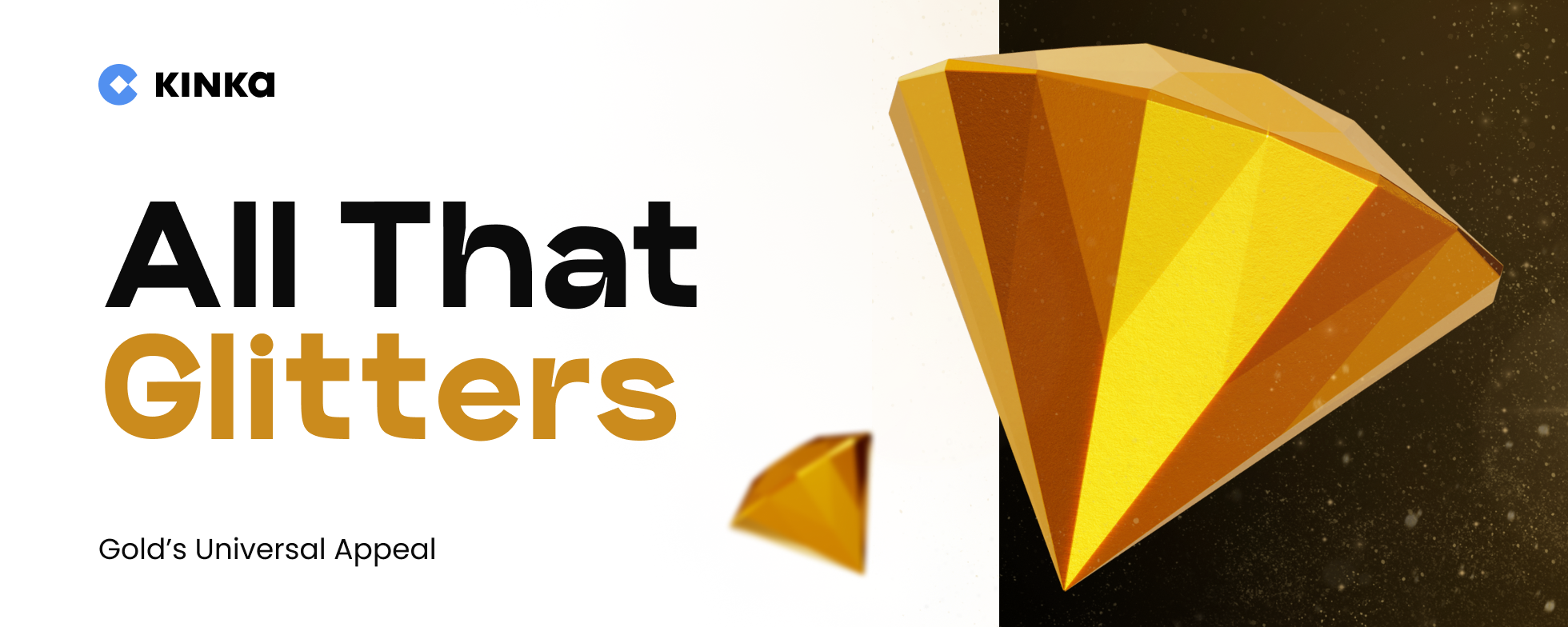Gold, the world’s local currency. Anywhere, and at any time in history, you hold gold. The modern generation is no different. Despite the rise and fall of various asset classes over the years, gold’s lustre has never dimmed. It is still the 4th largest asset class by traded volume, and the best performer of 2022. It still represents a safe haven asset against calamity and political shock, and it remains somewhere to store value in the vertiginous swings of flashing reds and greens.
Even after its brutal divorce from paper money in the mid-20th century, gold remained (despite obvious initial price shock) a steadfast investment for millions of individuals and thousands of institutions all over the world. But why, after all these years, does it still maintain its appeal?
History and tradition play an enormous part. Throughout the eras, gold (and silver) was the de facto method of storing and transferring wealth. From the Romans to the Sumerians to the Malians to the Chinese – gold just has a universal appeal. Twas ever thus, twill ever be. ‘Humans like shiny things.’
Yet gold’s use in adornment only scratches the service of why – for ancient, recent, and present civilizations – it’s been so ubiquitous. Gold is incredibly durable. In standard conditions, it doesn’t rust, it doesn’t erode, it barely oxidises, and is very difficult to destroy – all the while remaining malleable enough to be divisible and craftable. Leave gold on the bottom of the ocean for five centuries and when you retrieve it (as divers still sometimes do) the most it’ll have changed is to have a little bit of coral on it. Try saying that about paper money. Dollars, Yen and Dirhams all dissolve in washing machines, or in… inflation.
For the longest time, paper money was simply a promise to pay the holder in gold. Look at a British bank note, you will find the words ‘I promise to pay the bearer on demand the sum of ten pounds’ That’s ten pounds ‘of gold’. £10 is currently worth around just over $12, or just over ¥1800. 10 pounds of actual gold? Just over $236,000, or around ¥35,382,300. If you ever needed a stark reminder of just how brutally the value of currency has decreased – here it is. Gold is a hedge against hyper-inflation, from the Weimar Republic of history to the current crisis in Venezuela – for many gold is the way to stave off these pressures.
Owning gold, though, has never been quite so cumbersome. There is a significant cost to accessing bullion markets, and a significant maintenance fee to store and hold your physical gold for you. You could, of course, hold it yourself – if you’re comfortable with the custody risk. The problem with gold is, unlike your treasured vinyl records, that first edition book on your shelf, or your antique divan – everyone knows gold has value. The attraction to shiny metals is buried deep in human psychology. It’s a thief’s first target. As such, self-custody of it can be a worrisome core, and custodial arrangements a burdensome cost.
Over the last decade, many have come to view Bitcoin as ‘digital’ gold. The benefits of its digitality meaning gold’s most valuable properties (durability, malleability, divisibility) are arguably even more inherent in Bitcoin. The distributed ledger of the blockchain means that as long as the network sustains and you properly safeguard your private key, your currency is safer from censorship, seizing, theft, destruction and politics as it has ever been. Bitcoin has so far, too, acted as a hedge against inflation. Indeed, it was created for that reason. Yet Bitcoin’s decade-long history is nothing on gold’s, which has been doing this for 10,000 years, not 10.
On-chain gold – gold held on distributed ledgers – is the next step. That is Kinka’s goal – to continue gold’s march through history by helping it evolve with the times. By helping gold as an asset class use crypto primitives to unleash gold’s liquidity through novel Web3 markets and innovative new financial instruments.
And, crucially, Kinka is widening access to gold ownership. As a retail investor, it’s nearly impossible to buy gold at the actual market price unless you are a commodities broker. Yet with Kinka, each $XNK represents 1 fine troy ounce of gold, and the price paid is as close to the commodities price as is available anywhere.
Gold will continue to be a major asset class, but everything must move with the times. We are on the brink of a new financial system, one powered by blockchain dynamics and the composable and efficient financial instruments it is creating. Gold is one of the fundamental drivers of history and, with Kinka, it’ll be a fundamental driver of the future too.








